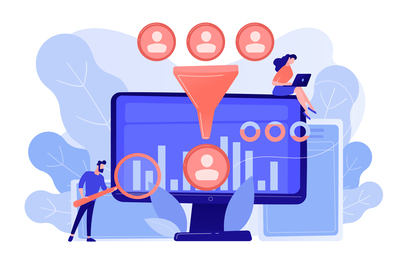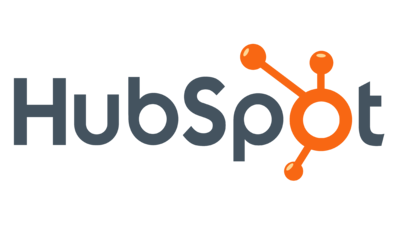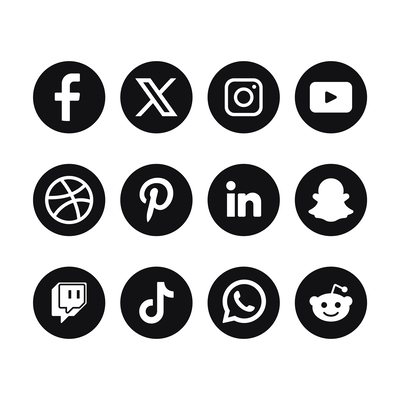How to Generate Leads in B2B: Effective Strategies and Tools for Success


In today's competitive business landscape, generating quality leads in B2B (business-to-business) is essential for growth. From understanding your target audience to utilizing advanced tools, successful B2B lead generation requires strategic planning and execution. Below, we'll explore proven strategies, tools, and techniques to effectively generate leads for B2B, with rich formatting to help you get started.

Table of contents:
Lead generation in the B2B space involves identifying and attracting potential clients interested in your business solutions. Unlike B2C, B2B lead generation usually targets decision-makers within companies, focusing on building long-term relationships rather than immediate sales. The process typically involves various digital marketing channels, sales tactics, and relationship-building strategies that move prospects through a sales funnel.

Exploring real-world examples of successful B2B lead generation can provide valuable insights into strategies that drive measurable results. Here are some noteworthy cases where B2B companies excelled at lead generation:
1. HubSpot’s Inbound Marketing Strategy
HubSpot is a pioneer in using inbound marketing to attract, engage, and delight customers. By offering a comprehensive array of free tools, webinars, and resources, HubSpot effectively generates a consistent flow of qualified leads. The company reported that its inbound marketing efforts contributed to a 50% reduction in lead acquisition costs. You can read more about their strategy here.
2. IBM’s Account-Based Marketing (ABM) for High-Value Leads
IBM leveraged ABM to focus on high-value accounts, personalizing marketing efforts to cater to specific enterprise needs. IBM’s campaign targeted key decision-makers through personalized content and direct communication, which increased their conversion rates significantly and led to notable growth in new accounts. For more information on IBM’s ABM approach, visit this link.
3. Slack’s Organic Growth and Word-of-Mouth Referrals
Slack's approach centered on creating an intuitive, highly valuable product that encourages word-of-mouth referrals. By offering a free version of its collaboration tool, Slack attracted businesses that later converted into paying customers due to their positive experiences with the platform. This organic strategy fueled Slack's rapid growth, and you can learn more about their methods here.
These examples illustrate how tailored strategies in inbound marketing, ABM, and word-of-mouth referrals can be instrumental in generating and converting leads in the B2B sector.
Understanding your audience is foundational to any lead-generation strategy. B2B sales often involve higher purchase values and longer decision-making processes, making it crucial to tailor your approach.

Key Steps to Identify Your Target Audience:
Content marketing is essential in establishing your company as a thought leader and attracting potential leads. Quality content informs, educates, and builds trust with your target audience, moving them through the sales funnel.
Effective Content Marketing Strategies:
Email marketing remains one of the most powerful tools for nurturing B2B leads. By targeting prospects with personalized and relevant content, you increase the chances of conversion.
Steps to Effective B2B Email Marketing:
| Email Marketing Tool | Key Features | Pricing |
|---|---|---|
| MailChimp | Segmentation, automation | Free & paid options |
| HubSpot | CRM integration, analytics | Free & paid options |
| ActiveCampaign | Personalization, automation | Starts at $9 per month |
Lead magnets are free resources offered to prospects in exchange for their contact information. They can help capture high-quality leads and provide value to potential clients.
Examples of Effective Lead Magnets:
Social media channels such as LinkedIn, Twitter, and Facebook can be highly effective in B2B lead generation. LinkedIn, in particular, is invaluable for connecting with decision-makers in your industry.

Social Media Strategies for B2B Leads:
Paid advertising, especially through platforms like LinkedIn Ads, Google Ads, and display ads, can help you reach a targeted audience faster. Paid ads are particularly effective when you have a clear understanding of your buyer persona and goals.
Types of Paid Advertising for B2B:
| Ad Platform | Target Audience | Ideal Ad Type |
|---|---|---|
| Professionals, decision-makers | Sponsored content, InMail | |
| Google Ads | All industries | Search, Display |
| Facebook Ads | Various industries | Retargeting, Lead Ads |
Landing pages are essential for converting website visitors into leads. Well-designed landing pages encourage visitors to provide their contact information in exchange for something valuable.
Key Elements of a High-Converting Landing Page:
Customer Relationship Management (CRM) tools and automation platforms play a critical role in organizing and managing B2B leads. CRMs streamline the lead management process, while automation tools enable you to engage leads consistently.
Recommended CRM and Automation Tools:
| CRM Tool | Features | Pricing |
|---|---|---|
| HubSpot | All-in-one CRM, automation | Free & paid options |
| Salesforce | Customizable, analytics | Pricing on request |
| Zoho CRM | Affordable, easy to use | Starts at $12 per month |
To continually improve your lead generation efforts, tracking and measuring success is essential. Metrics help identify which strategies are working and which require adjustment.
Key Metrics to Monitor:
Generating leads in the B2B space is a comprehensive process that requires targeted strategies, the right tools, and continuous optimization. By understanding your audience, utilizing content and email marketing, investing in CRM and automation tools, and tracking performance metrics, your business can build a sustainable pipeline of qualified leads. Leveraging a multi-channel approach ensures that you reach prospects across platforms and at various stages of the buying journey, increasing your chances of conversion and long-term client relationships. Contact us if you want to generate more leads for your B2B business.